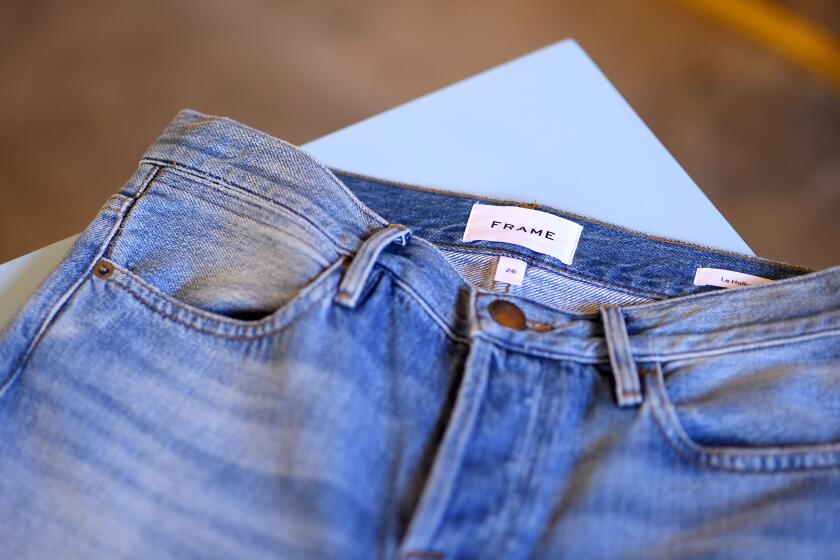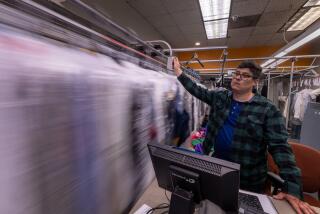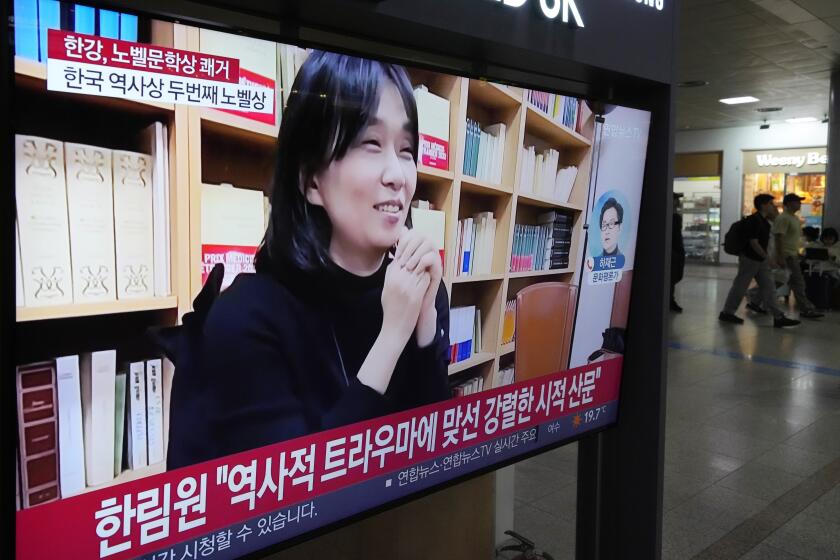Opinion: The American dream of bringing the mall home

- Share via
When Hurricane Milton was approaching Florida last month, a mom in suburban Tampa went viral on TikTok for her refusal to obey evacuation orders. When talking about feeling safe staying in her home, she said: “My husband built this house commercial. It’s residential, but it was built commercial-grade.” She wielded the phrase like a crucifix.
It’s not hard to see why commercial-grade is a balm to apocalyptic fears. The phrase evokes both the familiar landmarks of consumer life and the infrastructure built to withstand its relentless churn. Commercial-grade is the conveyor belt that delivers your airport Krispy Kreme and the system that supplies oxygen when you’re 30,000 feet in the air.
Tricked-out bunkers that only the wealthy can afford speak to both senses of the term. They boast state-of-the-art air and water filtration systems, bullet- and blast-resistant walls and, nestled inside all that industrial muscle, the kind of commercial-grade fun their occupants might miss while the world burns: bowling alleys and movie theaters, lazy rivers and go-kart courses.
Members of Gen Z — people from the ages of 16 to 26 — rely on in-person shopping experiences as much as online shopping, if not more, according to a report by a trade group for malls and retail centers.
These last amenities reveal the aspirational side of commercial-grade. It’s classic rich-guy stuff, and when the media talk about homes such as Candy Spelling’s Los Angeles manor, it’s not the most expensive features they usually cite but the commercial ones, like its gift-wrapping room.
It does feel undeniably luxe, making the commercial residential. There’s a reason that most children don’t fantasize about owning a modest ranch home. They dream of an abundance that is bulletproof, fortress-like: getting locked inside a Costco, sleeping in the Mattress Emporium, having everything you need wrapped around you like a hug. And though even a child knows you can’t live in a store forever, the fantasy becomes achievable if you bring the store home. You can have a soda machine in the kitchen and a McDonald’s in the foyer, just like Richie Rich.
A certain kind of affluent adult still nurses this dream. My dad’s parents — middle-class but pathologically frugal — wouldn’t even buy him a baseball glove, and he will forever be correcting this sense of deprivation. When he finally got a house with a guest room, the first thing he did was stock it with a minibar and one of those hotel-style luggage stands. He’s got the same set of steak knives that they gave you at a Lone Star Steakhouse, the exact sheets you sleep on at a Hyatt, and attics, garages and storage spaces filled with backups of everything he needs. For him, the American dream isn’t Rolexes and Ferraris. It’s inventory.
My niece was shocked when I spent $200 on made-in-L.A. jeans. She buys online from Chinese fast-fashion giant Shein, where jeans cost $10.
But why is Richie Rich’s in-home McDonald’s more thrilling than an assistant who can fetch a Big Mac at any hour? Isn’t a vending machine that dispenses free soda just a refrigerator with extra steps? For many people, it’s so much more exciting to pantomime a purchase without having to pay a dollar, to cut out the transaction but keep the rest.
This proposition is particularly seductive to people for whom a purchase is a fraught, wincing thing. Their dream of prosperity isn’t a store where you can buy anything you want but a store where everything is free because you already bought it. This distinction becomes especially striking in light of supply-chain shortages that continue to reverberate years after the COVID-19 lockdowns. During the pandemic, many Americans had the rattling experience of being able to afford something, but not being able to buy it. It makes sense, then, that the delight of the in-home pinball machine lies not just in unlimited gameplay but also in never having to scrounge for a quarter.
Ray Oldenberg coined the term “third space” to describe the public spaces — cafes, parks, stores, churches — that are essential in fostering a sense of community outside of home (the first space) and work (the second). But as the cubicle class sees the second space fold into the first, the third space seems to be following suit. Why go to a park when you have a yard, or to a cafe when you can have barista-quality espresso in your kitchen? When anything you need can be brought to your door, there’s no need to go to a store. Essentially, we have the store at home.
I want to deride this impulse as isolationist, a symptom of everything that’s wrong with America, but also, I get it. In my city, it takes me 30 minutes to walk to my favorite grocery store. Naturally, I wish it were closer. I begin to wish it were a 15-minute walk, but then I’d wish it were only five minutes away, or better, across the street, or best, on the ground floor of my building, so I wouldn’t even need to step outside. You begin with reasonable comforts: an in-unit washer and dryer, a little patch of green, a smooth commute. But if you follow this optimization to its logical end, if you design your perfect city, your perfect home, you can quickly find yourself alone in a bunker.
Once Hurricane Milton had passed, more than 120 homes in its path had been leveled. Tropicana Field needed a new roof, but it had survived, as had the hospital. And, after a 10-day absence from TikTok, the Tampa mom posted a serene video from her back porch, the sun setting over the Gulf. The storm may have been biblical, and their home may have suffered some leaks, but she had been right: Commercial-grade prevailed.
Emily Mester is the author of the forthcoming book “American Bulk: Essays on Excess.”
More to Read
A cure for the common opinion
Get thought-provoking perspectives with our weekly newsletter.
You may occasionally receive promotional content from the Los Angeles Times.










